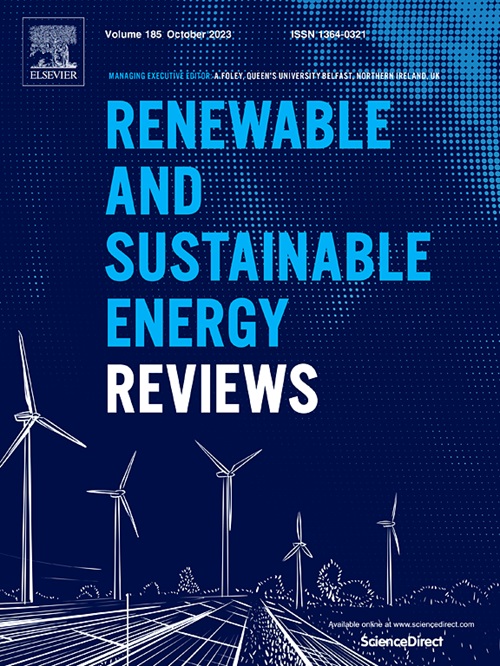Enhancing ecosystem services and biodiversity in agrivoltaics through habitat-enhancing strategies
IF 16.3
1区 工程技术
Q1 ENERGY & FUELS
引用次数: 0
Abstract
Agrivoltaics offers a promising solution to the dual challenge of ensuring food security and expanding renewable energy infrastructure while optimising land use and bolstering climate resilience. This study addresses a research gap by evaluating habitat-enhancing strategies for agrivoltaics. Using the InVEST modelling framework, the effectiveness of these strategies on key ecosystem services - carbon storage, sediment retention, water retention, and pollinator supply – was assessed.
Fifty-one utility-scale solar farms in North-Eastern Germany served as a hypothetical case study to analyse the potential ecosystem service benefits between habitat-enhanced and conventional farming practices in agrivoltaics. The Mini and Midi scenarios, aligned with the German agrivoltaic standard, integrated up to 15 % of habitat-enhancing elements in the field, while Maxi incorporated 22 %. Eco-Horticulture and Agriforst Orchard explored agricultural diversification by combining annual and perennial crops with habitat-enhancing features.
Model results revealed significant ecosystem service gains compared to conventional farming practices: a 33–88 % increase in pollinator supply, 9–22 % in water retention, 7.5–20 % in sediment retention, and up to 8 % in carbon storage. Notably, the diversification approaches demonstrated exceptional potential to enhance biodiversity while providing income diversification for farmers.
The study provides actionable insights for policymakers to scale agrivoltaics in line with countries’ biodiversity targets and inform future agrivoltaic standards, balancing renewable energy deployment, land use efficiency and biodiversity conservation, aligned with multiple SDGs. Integrating habitat-enhancing features in agrivoltaics could improve the aesthetic appeal of solar infrastructure, fostering public acceptance. Further field studies are recommended to validate outcomes in agrivoltaic-specific microclimatic conditions and refine strategies to local contexts.
求助全文
约1分钟内获得全文
求助全文
来源期刊

Renewable and Sustainable Energy Reviews
工程技术-能源与燃料
CiteScore
31.20
自引率
5.70%
发文量
1055
审稿时长
62 days
期刊介绍:
The mission of Renewable and Sustainable Energy Reviews is to disseminate the most compelling and pertinent critical insights in renewable and sustainable energy, fostering collaboration among the research community, private sector, and policy and decision makers. The journal aims to exchange challenges, solutions, innovative concepts, and technologies, contributing to sustainable development, the transition to a low-carbon future, and the attainment of emissions targets outlined by the United Nations Framework Convention on Climate Change.
Renewable and Sustainable Energy Reviews publishes a diverse range of content, including review papers, original research, case studies, and analyses of new technologies, all featuring a substantial review component such as critique, comparison, or analysis. Introducing a distinctive paper type, Expert Insights, the journal presents commissioned mini-reviews authored by field leaders, addressing topics of significant interest. Case studies undergo consideration only if they showcase the work's applicability to other regions or contribute valuable insights to the broader field of renewable and sustainable energy. Notably, a bibliographic or literature review lacking critical analysis is deemed unsuitable for publication.
 求助内容:
求助内容: 应助结果提醒方式:
应助结果提醒方式:


